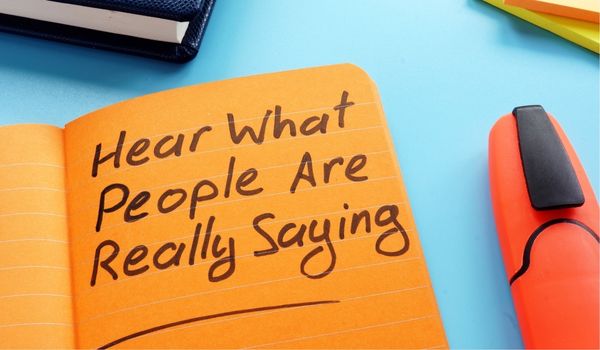Using Punctuation to Make Your Point
Grammar and punctuation matters. Misused punctuation marks can obscure the intentions of a written argument, court filing, or legal document, creating loopholes and misinterpretations. Alternatively, they can be the waiting opportunity you need to challenge a document and even impugn evidence.
For the purposes of this blog post, we’re addressing punctuation marks that are often used before, after, and between commas—but often without an exact sense of how and why they should be used. These punctuation marks are the semicolon, colon, hyphen, and dash. They make a difference when they are used! Don't worry. We are working on an additional blog post solely about commas. Because, well, they can be tricky!
Semicolons
Semicolons can be intimidating because they’re rather rare; they’re a bit of a power-play. Often enough, you can replace a semicolon with a period, creating two separate sentences. But not always!
Semicolons have three rules for their usage:
- Rule 1: They link independent clauses together (typically because the second clause contributes additional insight or information to the first) and can even link a list of independent clauses together.
- Example: We still have the option to appeal; the attorney says we have a decent shot if we act fast.
- Example: The plaintiff is entitled to compensation for the following reasons: he was injured at work; his insurance plan refused to cover him despite the promise of coverage for such an injury; and his employer fired him because the injury prevented him from working.
- Rule 2: They can replace commas in a list if the elements of the list are longer and/or possess commas in them already (perhaps to separate adjectives).
- Example: The law practice has offices in Chicago, Illinois; Nashville, Tennessee; and Indianapolis, Indiana.
- Rule 3: And they appear outside quotation marks if a semicolon is to follow a quotation (whereas commas typically appear inside the quotation marks).
- Example: Witnesses attest that the defendant said “I did this. It’s my mistake”; this is an admission of guilt.
As such, the semicolon is not just “the other comma,” or a mark that is used because a comma already appeared in a sentence, as in this incorrect example: “The appeal might not work out, though; so we need to be prepared for that.” Rather, the semicolon signals connections between independent ideas that build on overarching ideas.
Colons
Colons are actually quite easy to master. Most of the confusion around this punctuation mark probably has to do with whether the proper mark is a semicolon, “ ; ” or a colon “ : ”.
Colons have two rules, and they both prepare you for additional information:
- Rule 1: They set off new information or, more commonly, a list of information.
- Example: Gordon Klein was charged with the following crimes: security fraud, mail fraud, and wire fraud.
- Rule 2: They are used to set off a quotation:
- Example: The First Amendment is quite clear on this point: “Congress shall make no law respecting an establishment of religion, or prohibiting the free exercise thereof; or abridging the freedom of speech, or of the press.”
Even though the colon sets off additional information, not all new information needs to be signaled by a colon. A sentence like “The attorney cross-examined the witness with questions about: her parenting style, her mental health history, and her medication usage” does not require a colon because the list blends into the structure of the sentence. That sentence, though, could be rewritten to properly use a colon within it: “The attorney cross-examined the witness about three primary issues: her parenting style, her mental health history, and her medication usage.”
Hyphens
Hyphens combine words so that multiple words act on nouns as one word. They are a bit tricky, to be honest, because their called-for use sometimes depends on whether they come before or after the nouns they refer to.
The rules for using hyphens are as follows:
- Rule 1: Two words should be hyphenated if they function as an adjective and come before the noun they mean to describe.
- Example: She’s a sought-after attorney with a good reputation in custody cases.
- Rule 2: They can be used to offer additional clarification about an action if the action involves a word that typically does not include a hyphen.
- Example: The attorney re-positioned the evidence in a new light for the jury’s consideration.
Hyphens are complicated, though, by adverbs. A newly licensed attorney is never “a newly-licensed attorney,” even though “newly” and “licensed” work together to describe the “attorney.” This is because the adverb gives more meaning to the verb as they both give more meaning to a noun. This rule is something of an exception to the hyphen rules, if it’s helpful to think about it that way. So the trick is just remembering that hyphens should never be present in adverb phrases.
Dashes
Dashes are somewhat like momentary tangents. They interrupt a sentence and contribute more information to it. They are typically non-restrictive elements of a sentence, which means they can be removed from the sentence without altering the sentence’s primary message.
The rules for when to use dashes are as follows:
- Rule 1: Dashes can be used anywhere in a sentence, but they cannot start a sentence.
- Example: The client—who still had unreasonable expectations about dealing with her legal matter—kept asking questions her attorney already answered—and with more than enough detail, to be quite frank.
- Rule 2: The information between dashes can contain any additional information you deem relevant and important (though not essential) for the reader.
- Example: The defendant’s attorney began her cross-examination with a series of questions that seemed irrelevant—she asked about her history of getting perms at a salon—and the plaintiff’s attorney raised an objection to the judge.
- Rule 3: Dashes can often be supplemented with parentheses as well. That decision depends on how emphatic you wish for the information between dashes or parentheses to be conveyed.
- Example: The defendant’s attorney began her cross-examination with a series of questions that seemed irrelevant (she asked about her history of getting perms at a salon) and the plaintiff’s attorney raised an objection to the judge.
Even though there’s a lot of flexibility to the use of dashes, they can’t necessarily be used to draw emphasis to a clause that sequentially follows another clause, as in this case: “When your attorney proposes a bold strategy—trust her, but be honest as well.” Dashes are all about additional information that bring additional personality or insight to a sentence; they’re not about the core of the sentence itself.
Have any requests for grammar and punctuation clarifications? We are happy to help! Contact us anytime at hello@SimpleLaw.com with your requests.
Source:
The grammar rules presented in this blog post were adapted from the following text:
Grammar Smart: A Guide to Perfect Usage. 2nd ed., Random House, Inc., 2001.


